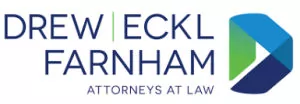- within Litigation and Mediation & Arbitration topic(s)
In the context of O.C.G.A. § 13-6-11, “bad faith” refers to the conduct of the defendant out of which the cause of action arose. Brown v. Baker, 197 Ga. App. 466, 467 (1990). Georgia's appellate courts explain that bad faith:
[C]annot be prompted by an honest mistake as to one's rights or duties but must result from some interested or sinister motive. Bad faith is not simply bad judgment or negligence, but it imports a dishonest purpose or some moral obliquity, and implies conscious doing of wrong, and means breach of known duty through some motive of interest or ill will.
Rapid Grp., Inc. v. Yellow Cab of Columbus, Inc., 253 Ga. App. 43, 49 (2001); see also Metro. Atlanta Rapid Transit Auth. v. Mitchell, 289 Ga. App. 1, 4 (2007) (same).
Notwithstanding the above, the Georgia Court of Appeals in Windermere, Ltd. v. Bettes, 211 Ga. App. 177, 179 (1993), held: “Indicative of whether a party acts in good or bad faith in a given transaction is his abiding by or failing to comply with a public law made for the benefit of the opposite party, or enacted for the protection of the latter's legal rights.” See also Nash v. Reed, 349 Ga. App. 381, 384 (2019) (finding the defendant's violation of traffic laws was evidence “sufficient to create a jury issue on the issue of bad faith.”)
The question, then, is whether negligence per se alone suffices to establish bad faith. Both tortfeasors in Nash and Windermere failed to abide by rules, regulations, and/or laws that were promulgated for the public's safety. The defendant in Windermere failed to ensure its building was up to code. Windermere, 211 Ga. App. at 177. The defendant in Nash failed to yield. Nash, 349 Ga. App. at 382.
Or must there be evidence of something more sinister? Brown and Rapid Group make plain that bad faith turns on the mal intent of the tortfeasor in the underlying transaction (e.g., a dishonest purpose, moral obliquity, or willful indifference to known duties). More importantly, perhaps, the underlying conduct of both tortfeasors in Nash and Windermere, conduct apparently so repugnant that it warranted the imposition of punitive damages, provided the requisite evidence of bad faith in those cases. The plaintiffs in Windermere sustained injuries “when they were forced to leap from the second story of [the defendant's] burning building because the exits were not safe to use.” Windermere, 211 Ga. App. at 179. The defendant in Nash struck the plaintiff, a pedestrian, with his vehicle but could have stopped and allowed the plaintiff to finish crossing the street. Nash, 349 Ga. App. at 383. Astonishingly, the defendant admitted that “he made an educated decision on how to avoid [the plaintiff]… and that he would ‘do it again.'” Id. at 382.
In this author's view, negligence per se alone does not sustain a bad faith claim under O.C.G.A. § 13-6-11. The sine qua non of a bad faith claim should still remain proof that the defendant's conduct was more than careless—it was wrongful.
The content of this article is intended to provide a general guide to the subject matter. Specialist advice should be sought about your specific circumstances.
[View Source]

